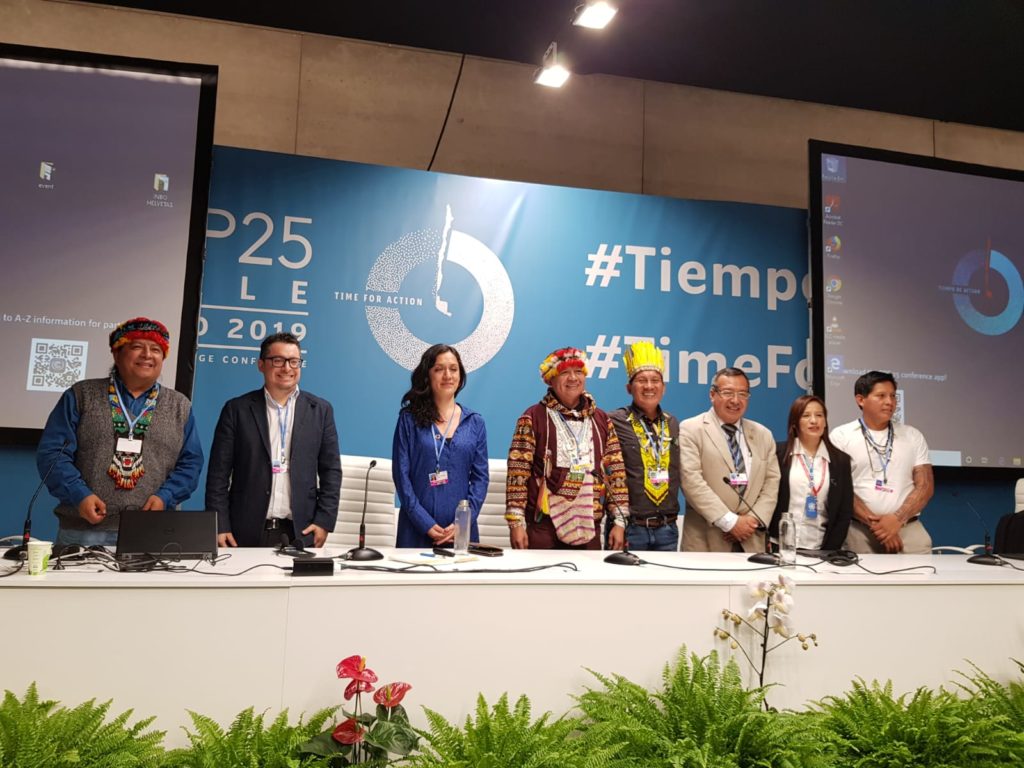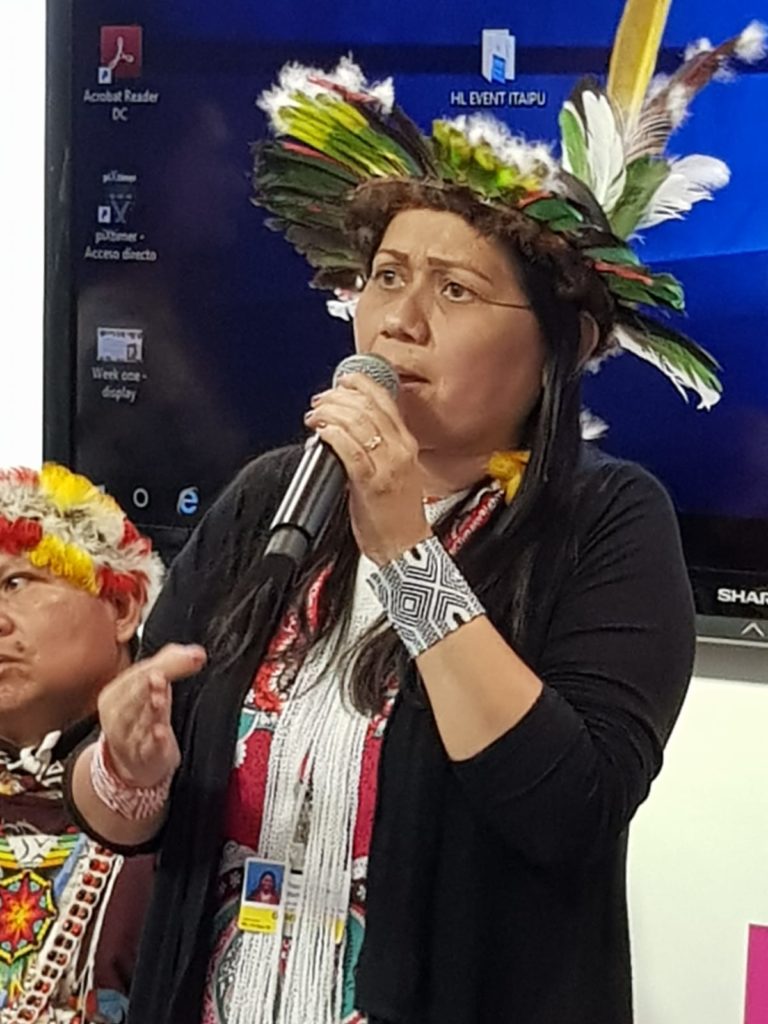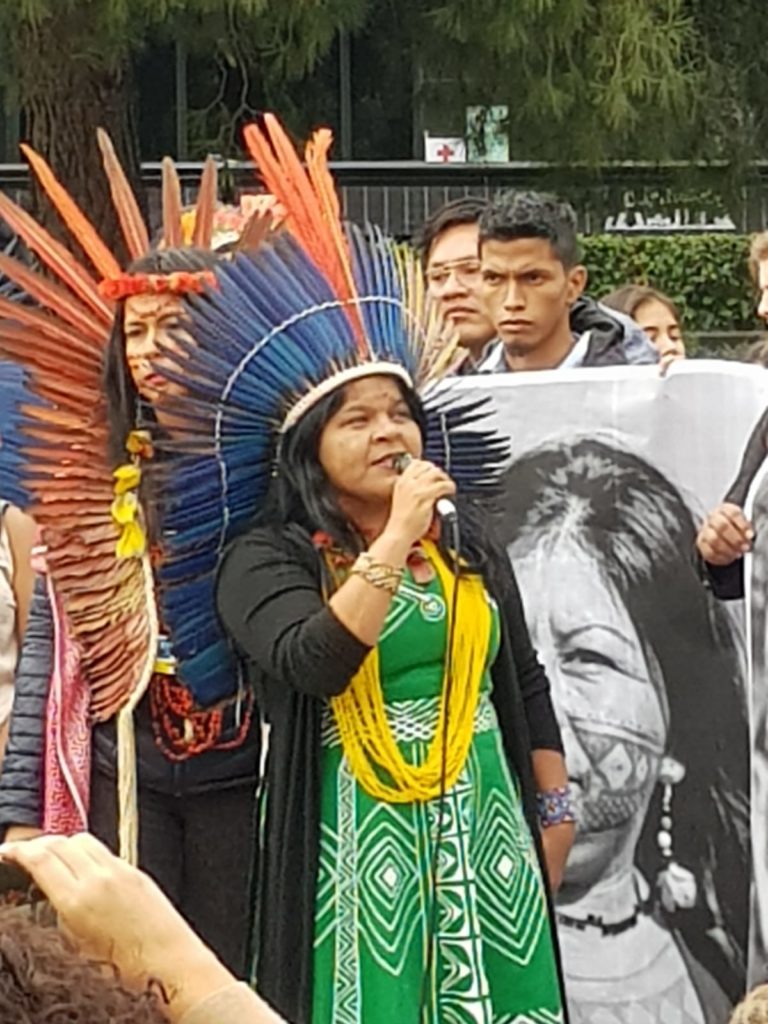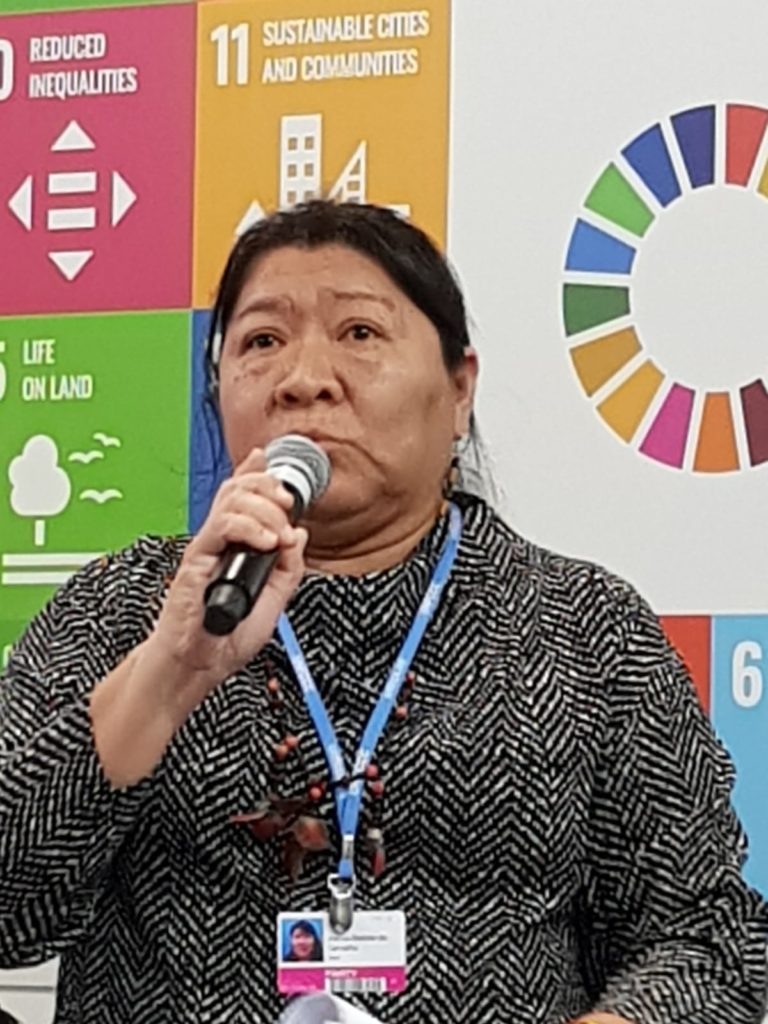COP25 was held from December 02 to 13th in Madrid, Spain
Side events were the stage for Amazonian indigenous communities to visiblize their central role in global climate action and call for urgent action in protecting indigenous territories and guaranteeing their collective rights
#AllEyesOnTheAmazon was the voice of leaders, participants and indigenous activists

Eliana Rojas (Hivos), Gregorio Mirabal (COICA), Nará Baré (COIAB), Edilena Krikati (COAPIMA), Joenia Wapichana (Brazilian Parliamentary), Erisvan Guajajara (Mídia Nínja)
Through an extensive agenda, the COP25 of the United Nations Framework Convention on Climate Change, held between December 2nd and 13th in Madrid, has been the scenery for governments, political actors, activists, and environmental, human rights and indigenous organizations to put the climate crisis and the need for higher ambition at the center of discussion.
At this international Conference’ side events- platforms designed for organizations to engage with Parties and other participants for knowledge sharing, capacity building, networking and exploring actionable options for meeting the climate challenge-, indigenous organizations such as COICA, COIAB, COAPIMA, CONFENIAE, shared the challenges, demands and proposals of indigenous and local communities around climate action.
“Nature-based solutions, rights-based decisions”, “All Eyes on The Amazon: Strategies for Land defense” and “Climate Action for the Amazon” were some of the events hosted by indigenous organizations to discuss the role of indigenous peoples in the defense of their territories, and how technology and innovation in combination of ancestral knowledge are key for climate change adaptation and mitigation.
During the “Climate Action for the Amazon” side event, Eliana Rojas, representative of All Eyes on The Amazon* stated: “Indigenous people are key in protecting their land and rights. Combining local and traditional knowledge with the use of new technologies (such as drones, cell phones and early warning systems), advocacy actions, communication campaigns and legal strategies to contribute to saving forests, combating climate change and NDCs, and advancing on the reduction of inequality, promoting well-being and securing natural resources.”
Our rights need to be guaranteed in actions to combat climate change. Climate change can not be separated from indigenous and human rights.
Nara Baré, coordinator of COIAB
Coinciding with the development of the COP25, two indigenous leaders from the Guajajara people in Maranhão, Brazil, were killed on December 7th, and another one on December 13th. These unfortunate events happened only a month before another Guajajara leader was killed in his own territory by loggers. Sônia Guajajara publicly made a strong statement: “These crimes are not isolated cases, they reflect the hatred that has been spread by the highest authority of the country against us, indigenous peoples.” In the side events, indigenous leaders from Ecuador, Peru and Brazil asked for urgent action to guarantee the full exercise of indigenous rights should be taken as a priority and that indigenous lives and culture should be respected.
Nara Baré, coordinator of COIAB, stressed the importance of indigenous peoples’ participation in government decisions. “States cannot decide without our participation,” she said. “Our rights need to be guaranteed in actions to combat climate change. Climate change can not be separated from indigenous and human rights.”
Nara Baré, coordinator of COIAB, and Joenia Wapichana, first female indigenous congresswoman in Brazil, and Sônia Guajajara, leader of APIB, calling for urgent action at COP25.
Co-management between State and Indigenous peoples is possible
The co-management of the Amarakaeri Communal Reserve in Peru is an example that working alongside governments is possible. During the side event “Nature-based solutions, rights-based decisions,” Luis Tayori, on behalf of ECA Amarakaeri – Executor of the Reserve Administration Contract – spoke about the benefits of building a relationship of trust between the State and local and Indigenous communities, based on mutual transparency and knowledge sharing: “We cannot safeguard our territories alone, we need other cultures, other knowledge, technology.” In addition, he shared the working model within the Reserve, “thanks to our allies, [such as the All Eyes on the Amazon program], we have strengthened the work of park guardians through the use of technologies such as drones and smartphones; understanding how we can safeguard these territories combining traditional and technical knowledge.”
Juan Carlos Jintiach (COICA), Renato Ríos (DRIS), (Eliana Rojas Hivos),Gregorio Mirabal (COICA), Fermín Chimatani (ANECAP), Luis Hidalgo (Gobernador de Madre de Dios, Perú), Berioska Quispe (MINAM), Luis Tayori (ECA Amarakaeri)
Time to reflect and act
As the UN Climate Change Conference comes to an end, countries, organizations, activists and political leaders around the globe return home with the task to reflect on its learnings and advances but also on the steps to follow to answer to the climate emergency.
We are currently facing not only a climate crisis, but a humanitarian emergency in the Amazon.
Carolina Zambrano, All Eyes on the Amazon Program Manager
As Carolina Zambrano, All Eyes on the Amazon Program Manager mentioned: “We are currently facing not only a climate crisis, but a humanitarian emergency in the Amazon. Only through concerted and collaborative action for the defense of indigenous rights, will we be able to tackle both”. Is time to put #AllEyesOnTheAmazon and empower local and indigenous communities for the protection of their land and rights in benefit of the conservation of nature and climate mitigation and adaptation.




